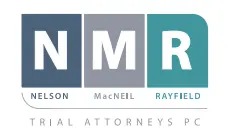Semi-trucks are so common on the roads today that it is virtually impossible to drive even a short distance without seeing one. Perhaps you yourself have even wondered how easy or difficult it might be to drive an 18-wheeler. Sometimes, it really doesn’t look that difficult, such as when a truck is cruising down the interstate. Other times, it looks quite complicated, such as when a big truck is backing up or making a complicated turn.
Obviously, with vehicles that can present such a great danger to the motoring public, one would hope that requirements are in place to protect the motoring public. That is, in fact, the case. In this article, we will discuss some of the requirements for being eligible to drive a semi-truck.
The Need for Semi-Trucks and Semi-Truck Drivers
There has been a lot of talk lately about supply chain shortages, how they affect the availability of merchandise, and how they are a part of what is fueling inflation. The availability of semi-trucks and truck drivers is an important part of that supply chain. Because there is a shortage of truck drivers, people may now understand their importance more than ever.
Regulating the Interstate Trucking Industry
Notwithstanding the economic importance of the trucking industry, it is equally important to recognize the importance of safety. To promote safety in the trucking industry, the federal government promulgates regulations that apply to all large trucks and truck drivers operating in interstate commerce. The Federal Motor Carrier Safety Administration (FMCSA) issues these regulations, which include requirements for truck drivers. States must meet federal minimum requirements, but are permitted to impose additional requirements that exceed the federal mandates.
Specific Rules for Truck Drivers
To drive a commercial truck, truck drivers must obtain a commercial driver’s license (CDL) from the state they live in. In addition to a CDL, some types of driving require an additional special endorsement. Examples include:
- Driving with double trailers
- Driving with triple trailers
- Transporting hazardous materials
Obtaining a CDL requires compliance with many rules. A few of them follow.
- Each driver of vehicles over 10,000 pounds must obtain and maintain a Medical Examiner’s Certificate. This ensures that a driver is medically qualified to drive a large truck.
- Drivers who were issued a CLP on or after February 7, 2022 who apply for a Class A or Class B CDL for the first time must complete entry level driver training.
- To obtain a CDL, you must pass a CDL skills test that includes three parts: a road test, a basic controls test, and a vehicle inspection test.
Rules that apply to truck drivers are not static – the government continually examines proposals for changes and sometimes implements them. For example, the entry level training requirements discussed above are relatively new and some experts think that they will worsen the truck driver shortage. However, these regulations are ultimately designed to promote safety.
On the other hand, a new regulation will now allow people as young as 18 years of age to train and drive trucks. While this may help alleviate the driver shortage, there are some concerns that safety could suffer.
Negligent Truck Drivers and Trucking Companies
Ultimately, driving a semi-truck takes knowledge, skill, and training. While most drivers demonstrate professionalism, some make catastrophic mistakes. When a truck driver negligently causes an accident, the law allows the injured victim to be made whole. In many cases, the trucking company will be held responsible for the acts of its driver.
Call with Questions
If you or a loved one has been injured due to the negligence of a truck driver or a trucking company, you will almost certainly have questions about your rights. The experienced truck accident lawyers at Nelson MacNeil Rayfield are here to answer them. Please call us for a free consultation. We have helped injury victims all across Oregon. We know that the only way to help keep Oregon’s roads safe is by holding responsible those who behave negligently and cause accidents.
